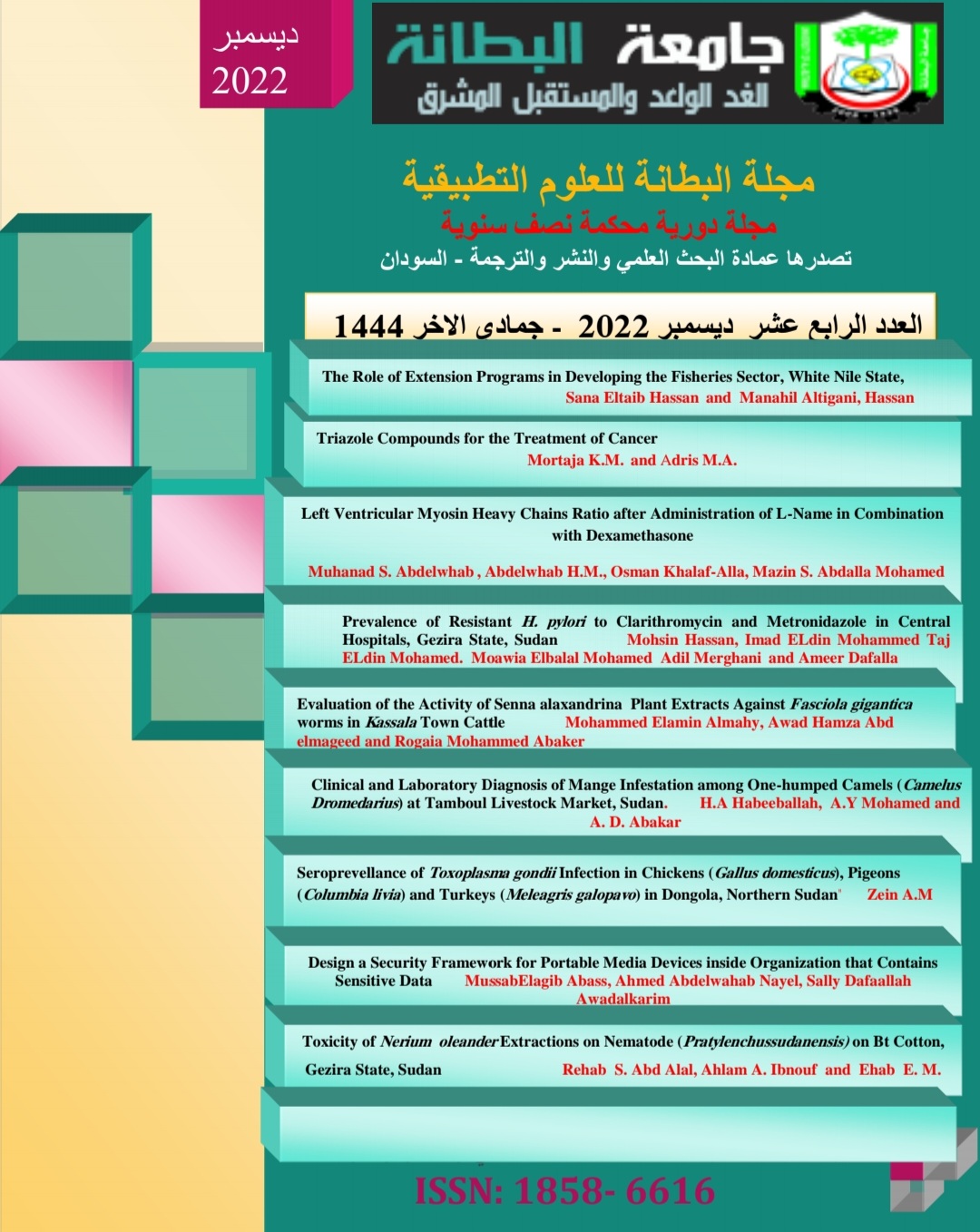Prevalence of Resistant H. pylori to Clarithromycin and Metronidazole in Central Hospitals, Gezira State, Sudan
الكلمات المفتاحية:
Helicobacter Pylori, Clarithromycin, Metronidazole, Resistance, PCR, Prevalence , Molecular testingالملخص
Infections with H. pylori affect more than 50% of the world's population. The estimated
lifetime risk of gastric ulcer is 20% and the estimated lifetime risk of stomach cancer is 1-
2%. Clarithromycin- and metronidazole-resistant H. pylori strains pose a global public
health problem. These strains usually carry mutations within the 23S rRNA gene
associated with clarithromycin and metronidazole resistance. The aim of this study was to
detect mutations associated with H. pylori and clarithromycin and metronidazole
resistance in Sudanese patients from Gezira state. A cross-sectional study was conducted
at central hospitals (Rufaa, Hassaheisa, and Wadmedani) in Gazira state, Sudan, with the
aim of estimating the prevalence of H. pylori infection in randomly selected individuals.
For this purpose, 334 faecal samples were collected and tested. Another goal was to
detect the presence of H. pylori DNA. While concurrently detecting mutations associated
with resistance to clarithromycin and metronidazole. Gastric biopsy was taken from each
enrolled patient by endoscopy. Molecular detection of resistance genes to metronidazole
(rdx gene) and clarithromycin was done byTaqMan real-time PCR due to this 80 biopsy
samples were taken and tested. Three hundred and thirty four patients, 197 (58.9%) males
and 137 (41.01%) females participated. The prevalence of H. pylori infection was 73.7%
(246/334). Eighty patients, 45 male (56.25%) and 35 female (43.75%) involved. Of the 80
samples, H. pylori was detected in 56 (~70%) samples by 16's RNA. Allele-specific PCR
detected the A2142G variant in 32/56 (~57.14%) of the samples and the A2143G mutation
in 25/56 (~44.64%). Variant detected by allele-specific PCR Mtz(rdxAS131) in 34/56
(~ 60.71%) sample, while Mtz (rdxAS59) mutation was found in 26/56(~ 44.42%)
Eradication of H. pylori has become difficult due to global increasing of its
antimicrobial resistance. This study revealed a high frequency (32% and 25%) of mutations associated with clarithromycin resistance (A2142G and A2143G) respectively
and metronidazole (34% and 26%) of mutations associated with mteronidazole resistance
(rdxAS131 and rdxAS59) respectively. This information should be taken into consideration
to avoid eradication therapy failure.Continuous surveillance for detection of this
resistance should be done to help physicians in selection of optimum eradication therapy.
